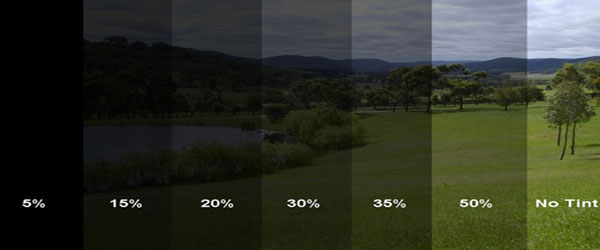
If you are looking for a cost-effective and simple way to improve your privacy and reduce sun damage to your home, then window tinting could be the answer. Curtains and blinds have their place within the home, but when it comes to the light reduction, they tend to be an all-or-nothing solution. Slated blinds may give you the degree of light you require, but they do not provide real privacy and can lead to lines of fading within your home.
While window tints are the ideal answer, this is only true if you get the tint percentage right for your needs. Get it wrong and you could literally be left in the dark.
Understanding visible light transmission
Unlike curtains, window tints are not an all-or-nothing approach to light reduction. The films are available in a broad range of tint darknesses that are measured by percentages. However, the percentages do not refer to the color of the tint, but rather the amount of light they transmit. The higher the given percentage, the more light is allowed to get through a tinted window; that amount of light is called visible light transmission, or VLT. A tint with 25% VLT transmits 25% of the visible light while a film with 90% VLT blocks 10% of it.
The uses of different tints
Choosing the right percentage VLT requires a balance between safeguarding your privacy, protecting your home from sun damage, and allowing enough light in to be able to see comfortably. One of the benefits of window tints is that you can choose different tint films for various rooms without affecting the overall decor of your home. For example, a room with a high proportion of soft furnishings that are likely to fade in strong sunlight might required a lower VLT percentage than a bathroom.
However, you need to balance the VLT against the room’s uses and the time of day you are likely to use it. If you are present in the room a great deal, 10% or 20% VLT may be too dark. However, for a room only used in the evening, this percentage might be just right.
VLT and UV reduction
The UV or ultraviolet rays are the ones likely to do lasting damage to both your skin and your health. If you or your family members suffer from skin conditions or are particularly sensitive to the sun, you can be at risk from UV even indoors. One of the many benefits of using window tints is that they minimize the amount of UV rays entering your home.
In addition, you do not have to go for the lowest VLT percentage to keep UV light at bay; the ability of good quality window tints to block UV rays is not connected to the color of the film. Therefore, even a 90% VLT can safeguard your family's health and wellbeing.
Making VLT percentages work for you
Now that you are aware of how the VLT percentages work, you need to decide how best to make them work for you. Consider each room at a time, taking into account its use, the risk of sun damage, and how much sun exposure the room gets. Then consider how overlooked the room is; if your neighbors are within touching distance, this is going to be an important part of your final decision. However, if your nearest neighbor is in the next county and there are no bypassers, you may avoid figuring privacy concerns into your equation. Once you know what you want, find the right supplier, sit back and enjoy your sun-safe and private home.
